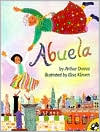This blog is part of Wider Opportunities for Women (WOW)’s 2nd annual blog day in honor of Older Americans Month. Share your thoughts on how the budget can support persons of all ages by visiting WOW’s website and writing your own blog http://www.wowonline.org/budgetmatters/Above call, the federal budget is an expression of our values as a nation. In making a budget, Congress chooses what investments to make and how to raise adequate revenues to support those investments. Those budget decisions should be a manifestation of American values.
There is no greater core American value than our commitment to support families when they face financial hardship, disability, or death. Our budget should in particular support the most vulnerable members of the family: our children and seniors.
Many are using the economic downturn to argue for a reduced commitment to families. Reducing the deficit in the long-term is important because an unsustainable debt could harm our ability to make needed investments. However, enacting a balanced budget now would actually be counter-productive to an economic recovery. During a recession, deficit spending is necessary to get the economy moving again.
As Congress considers budget reforms, lawmakers should resist the temptation to cut vital benefits like Social Security. Congress should keep its promise and strengthen Social Security for all generations, ensuring that children, youth, and seniors receive critical investments across the lifespan.









